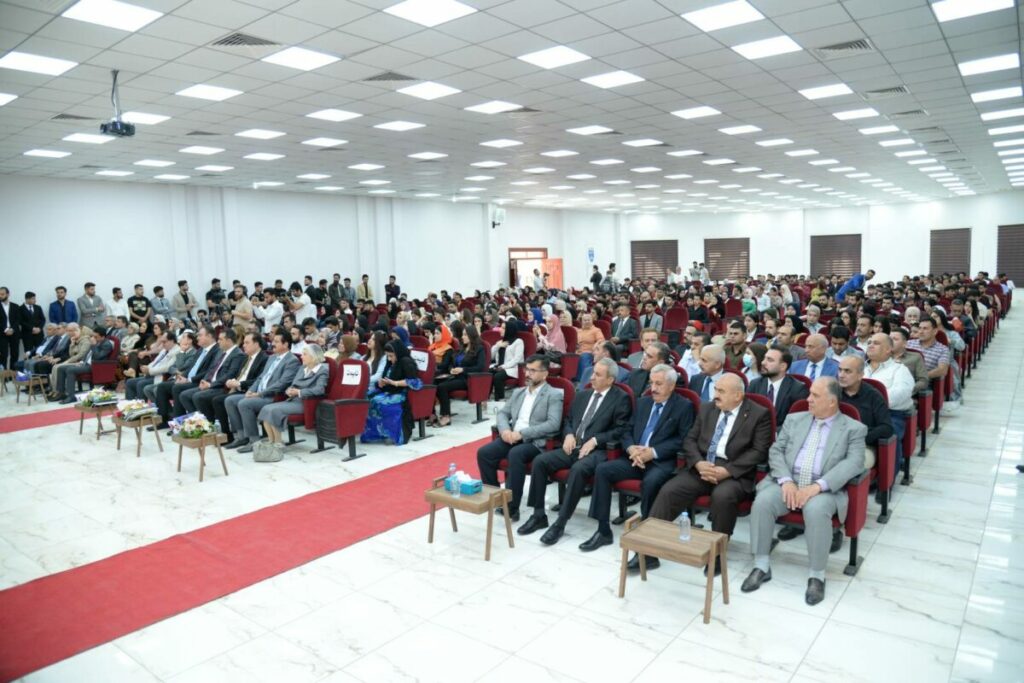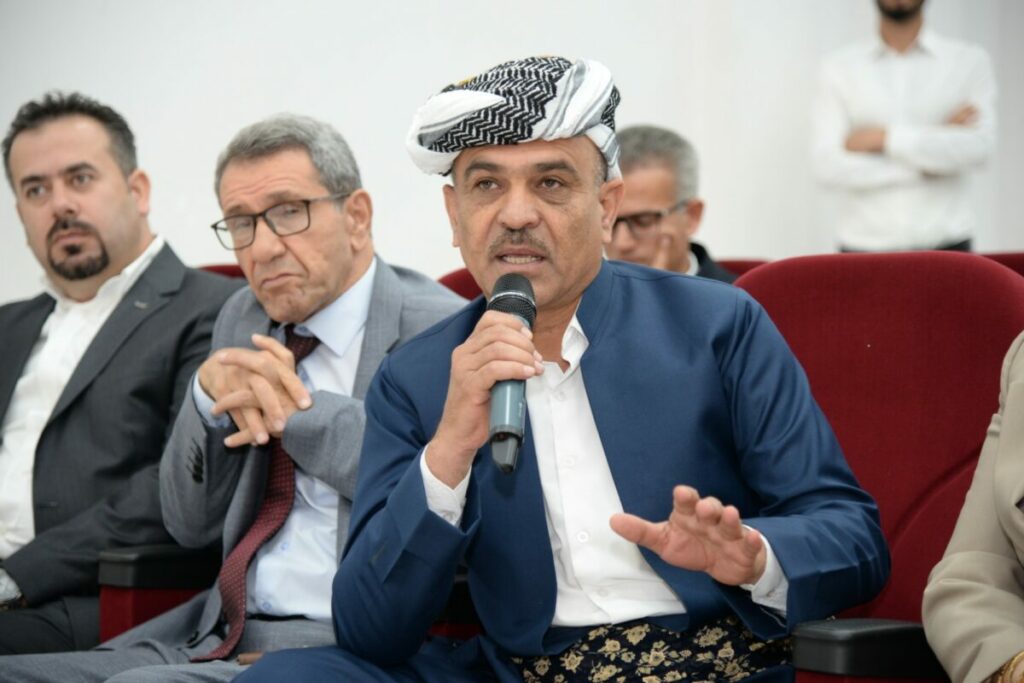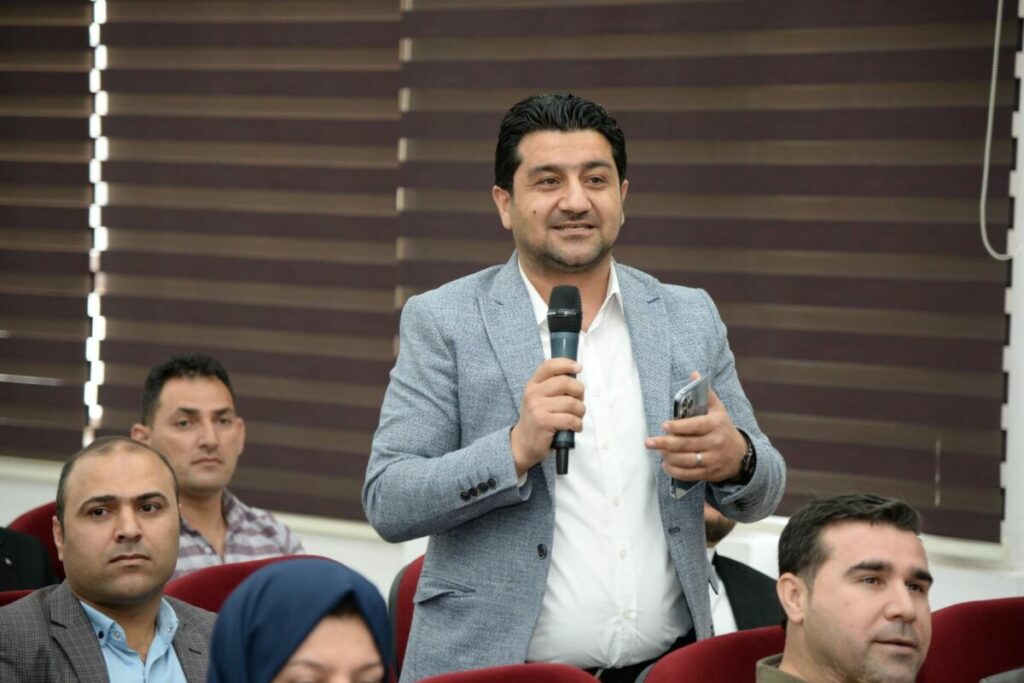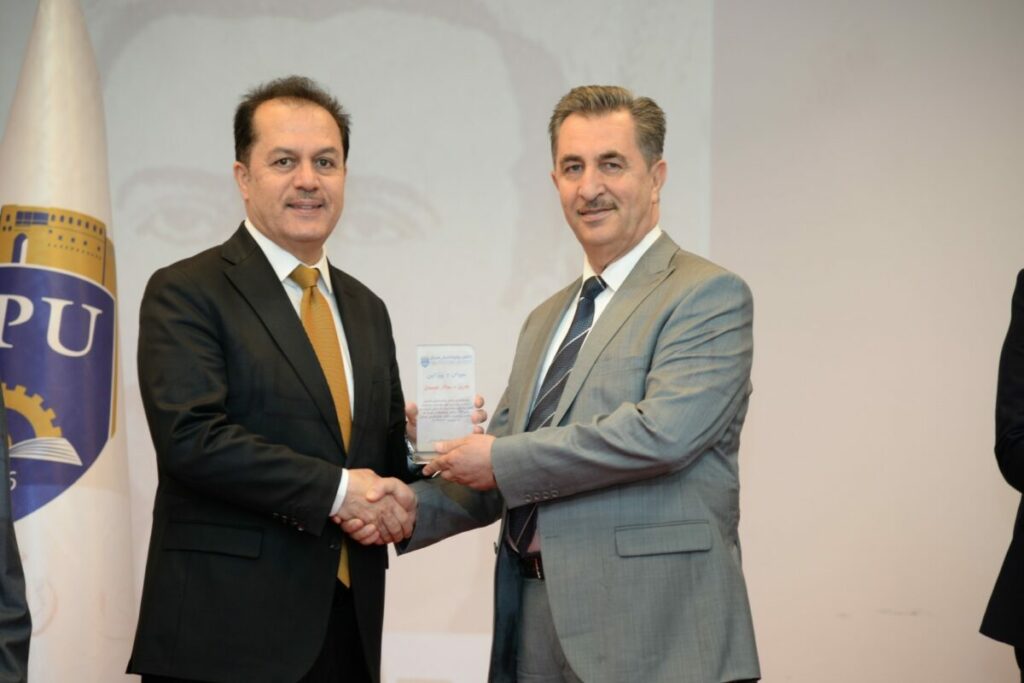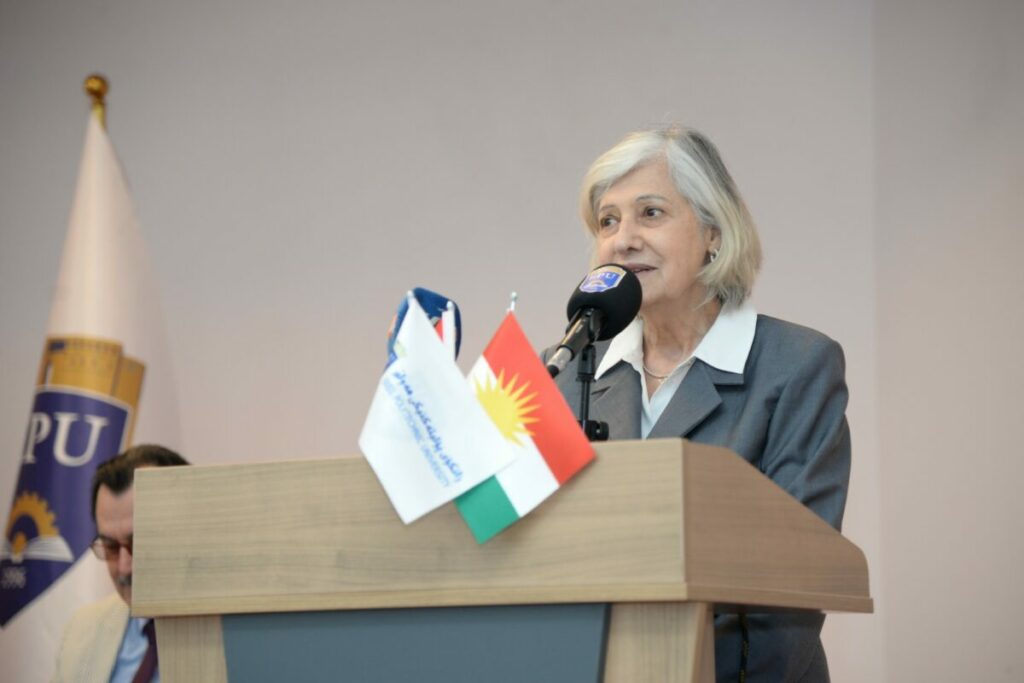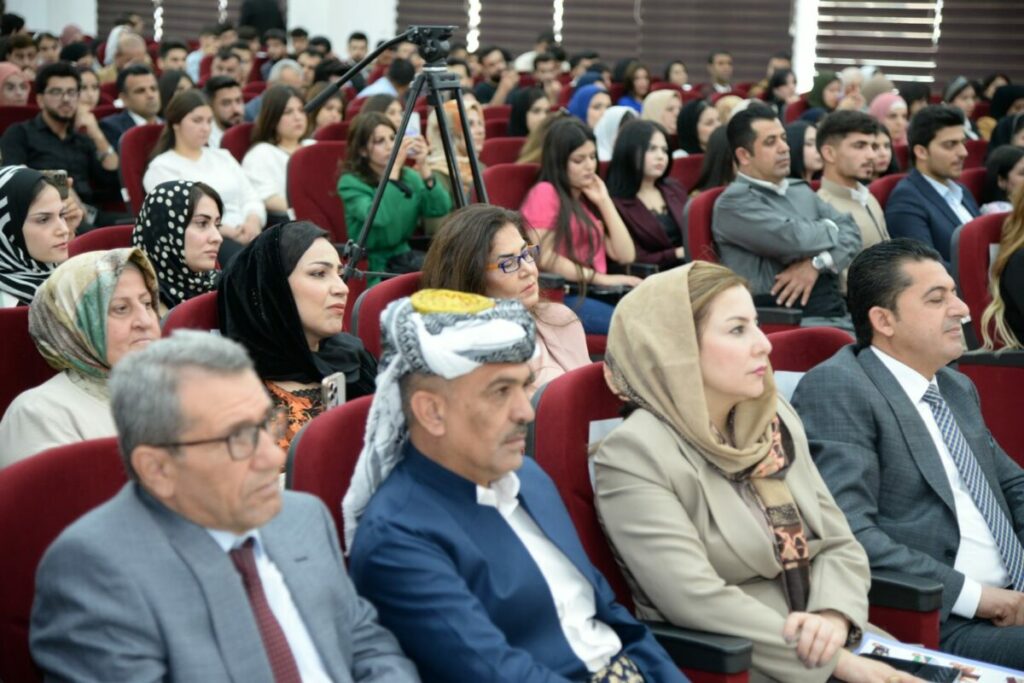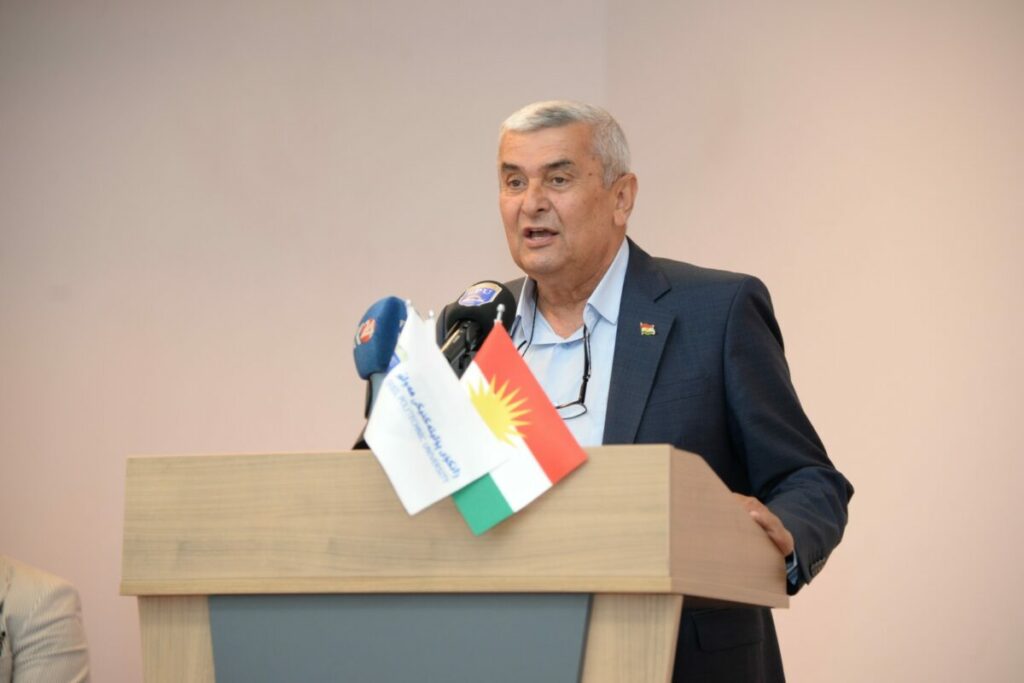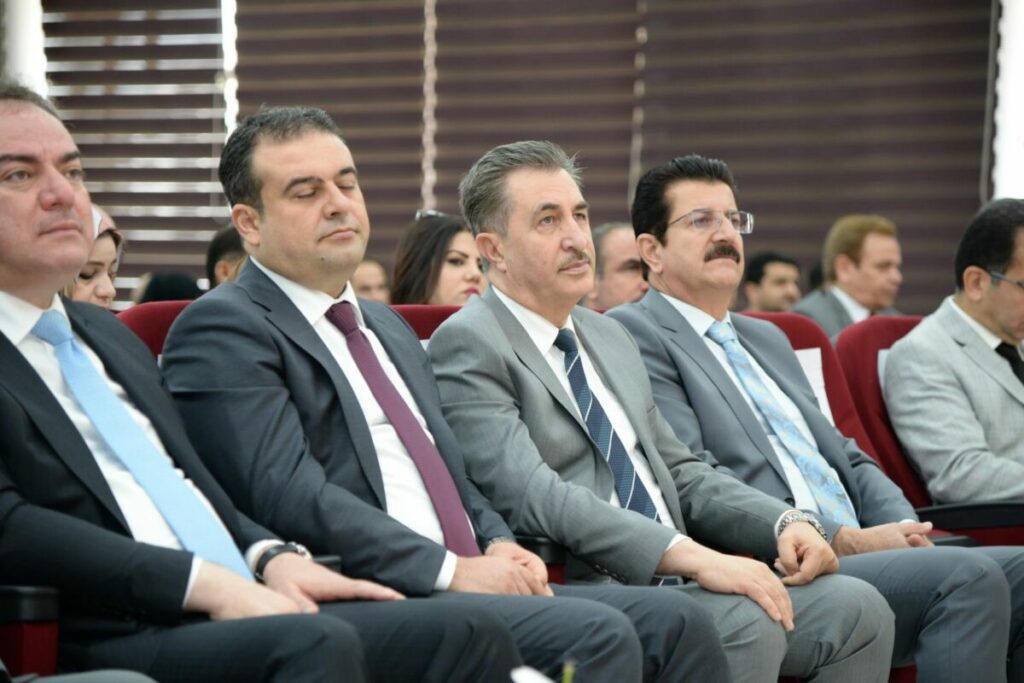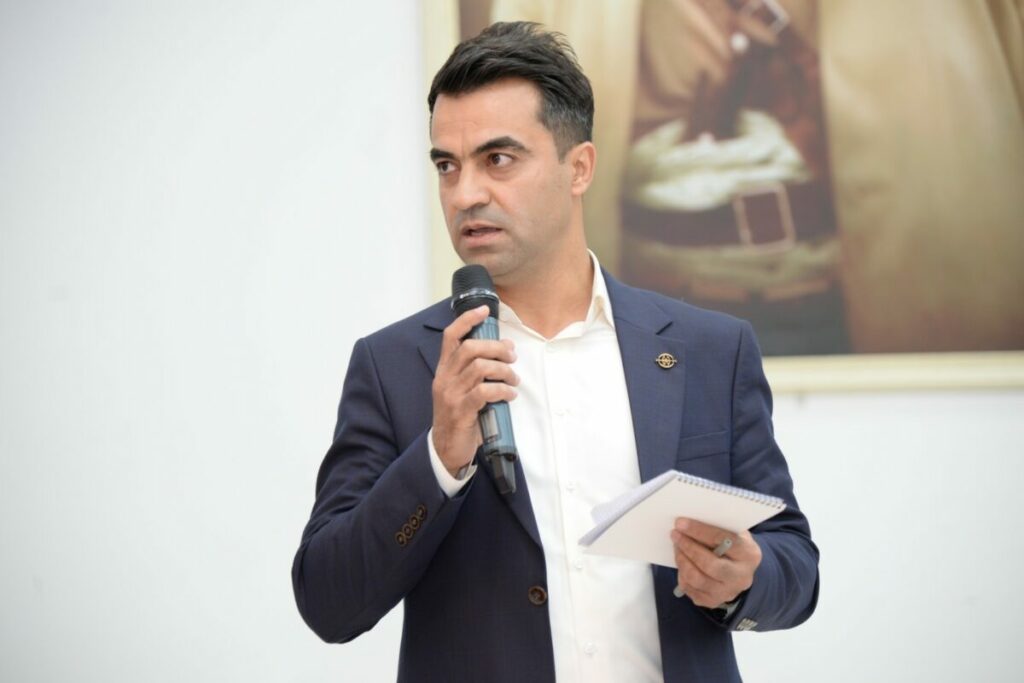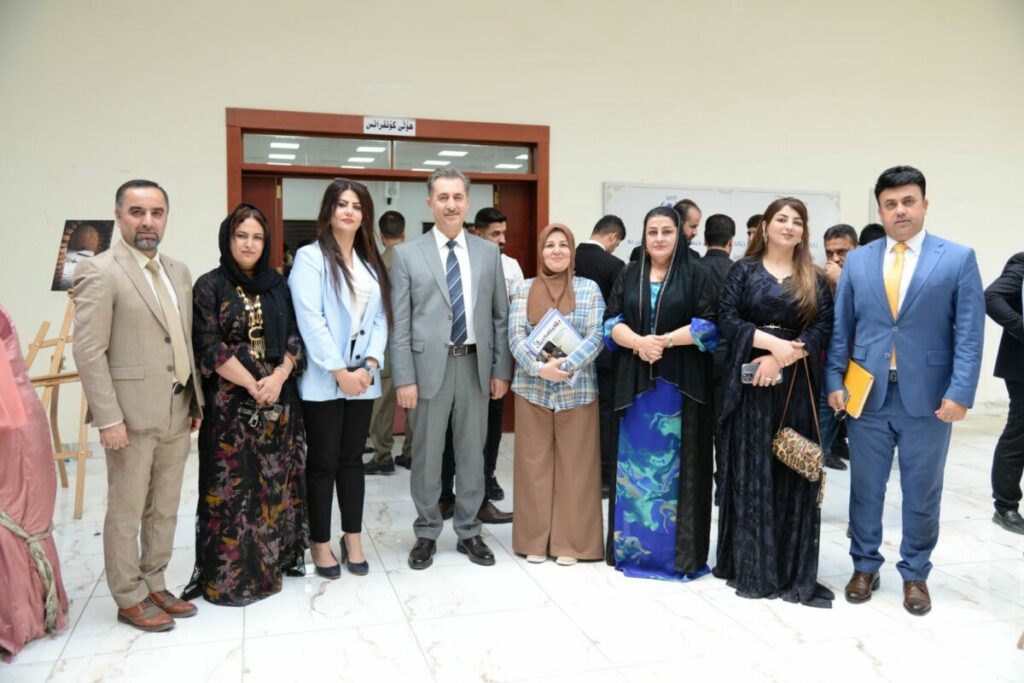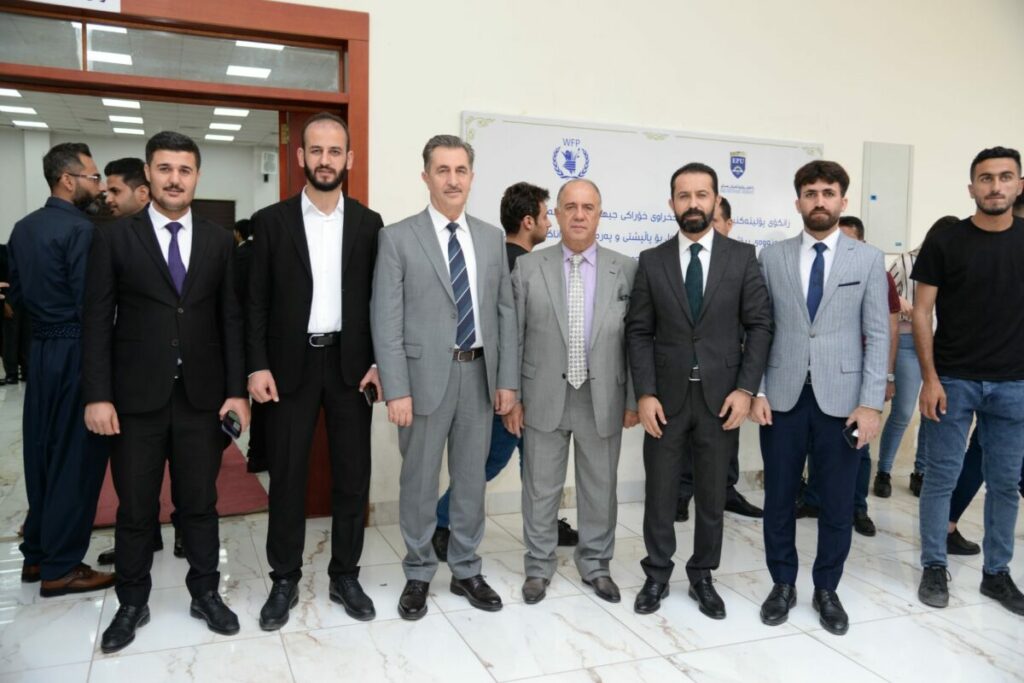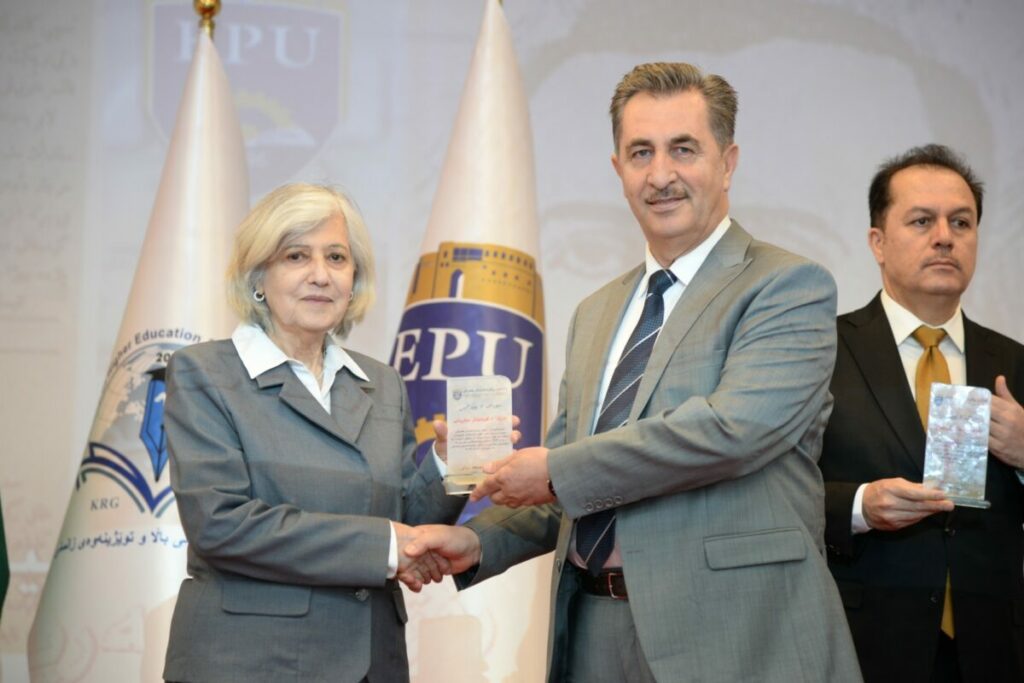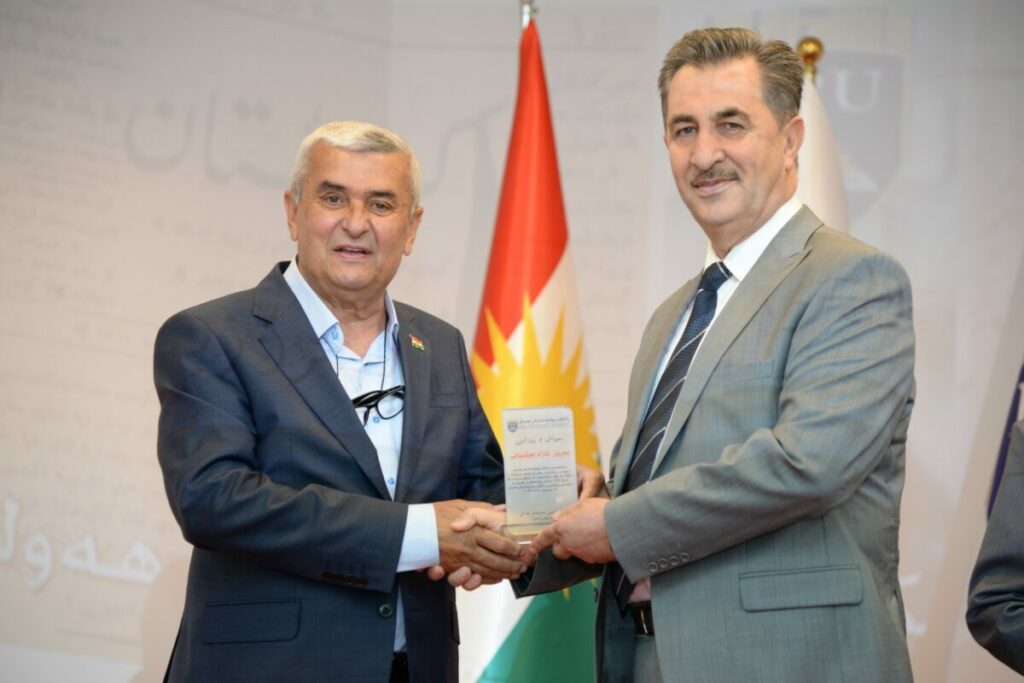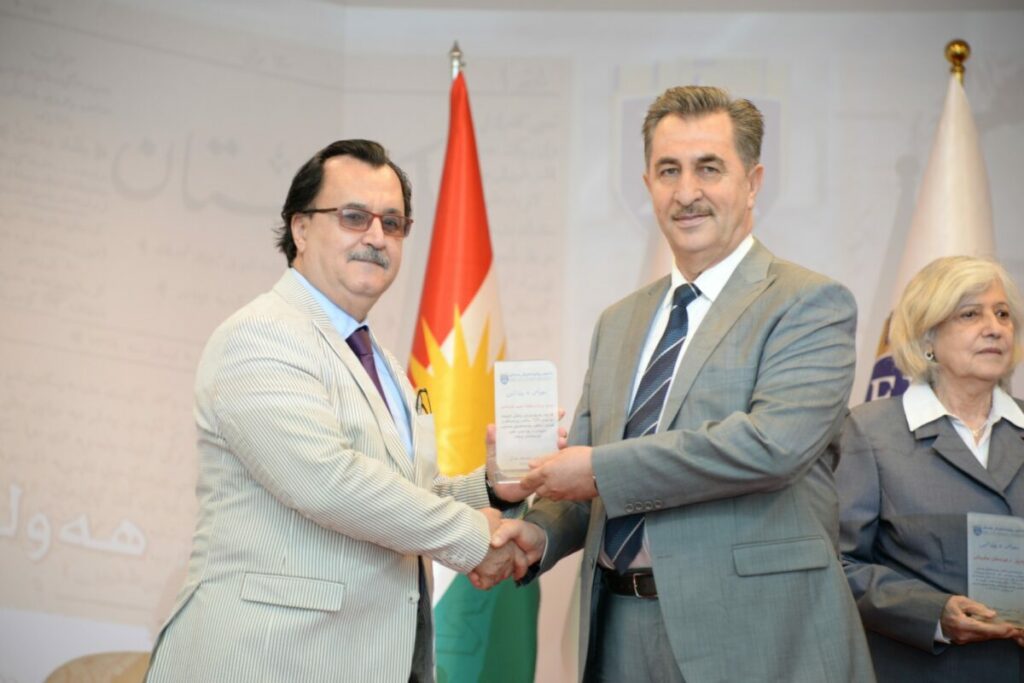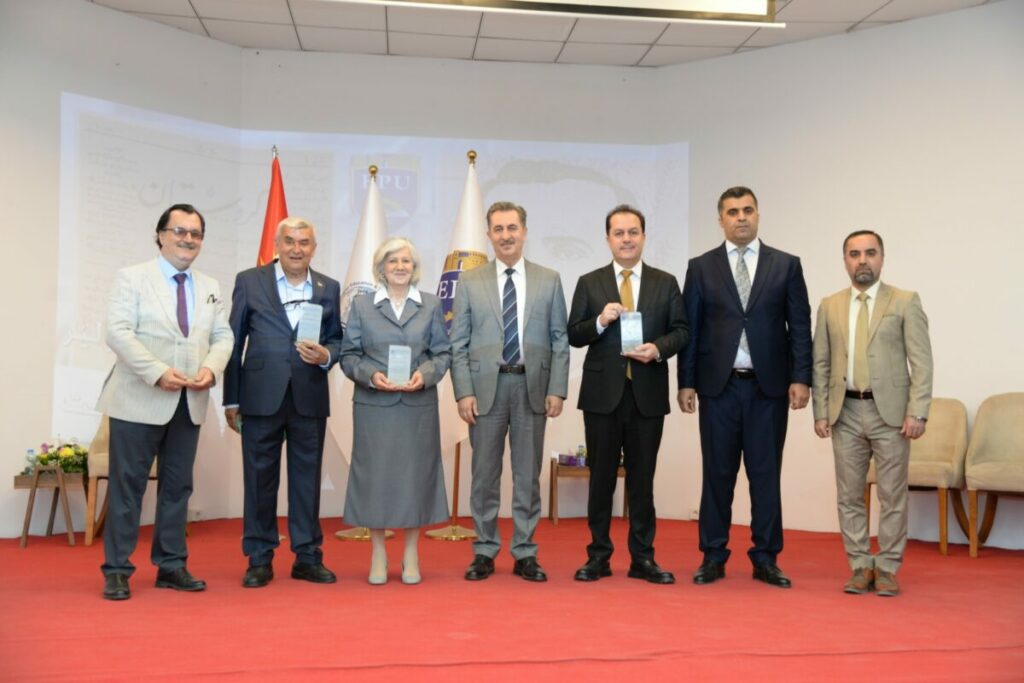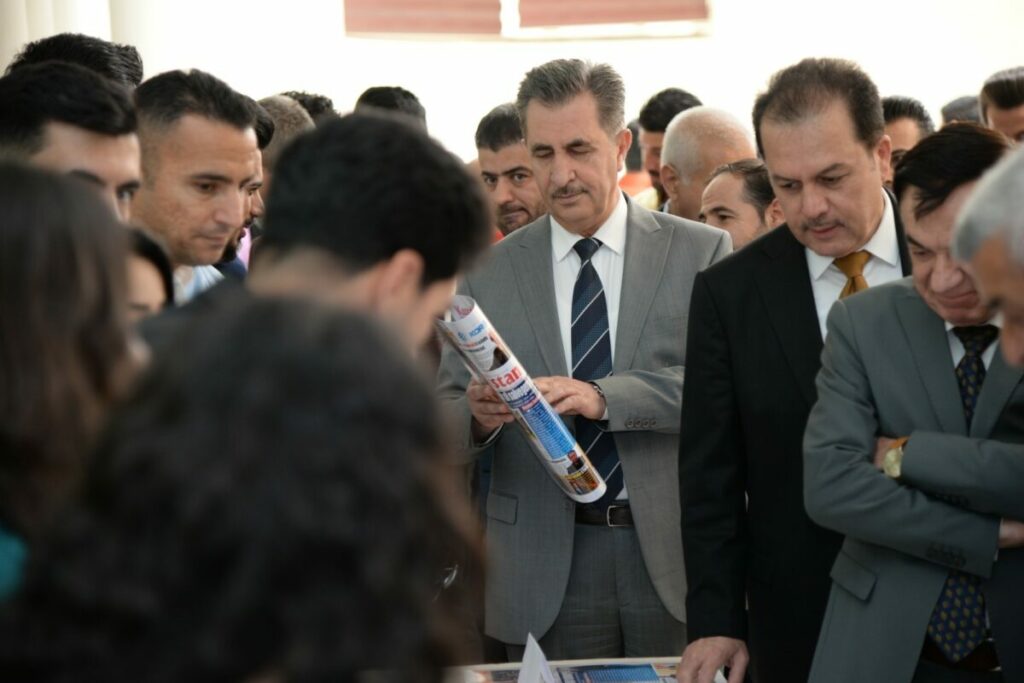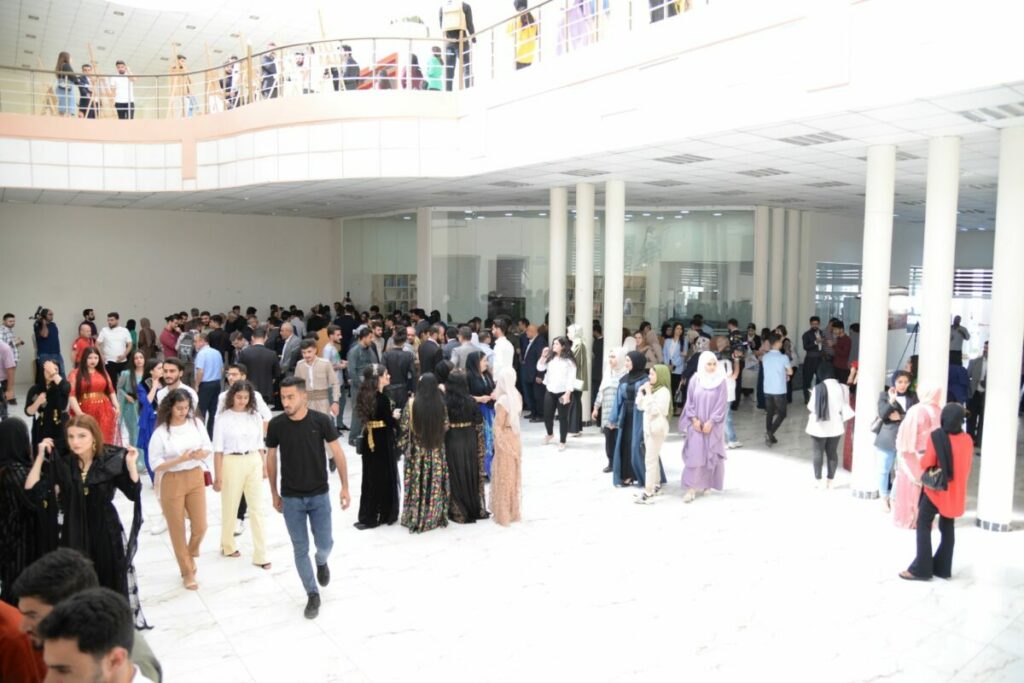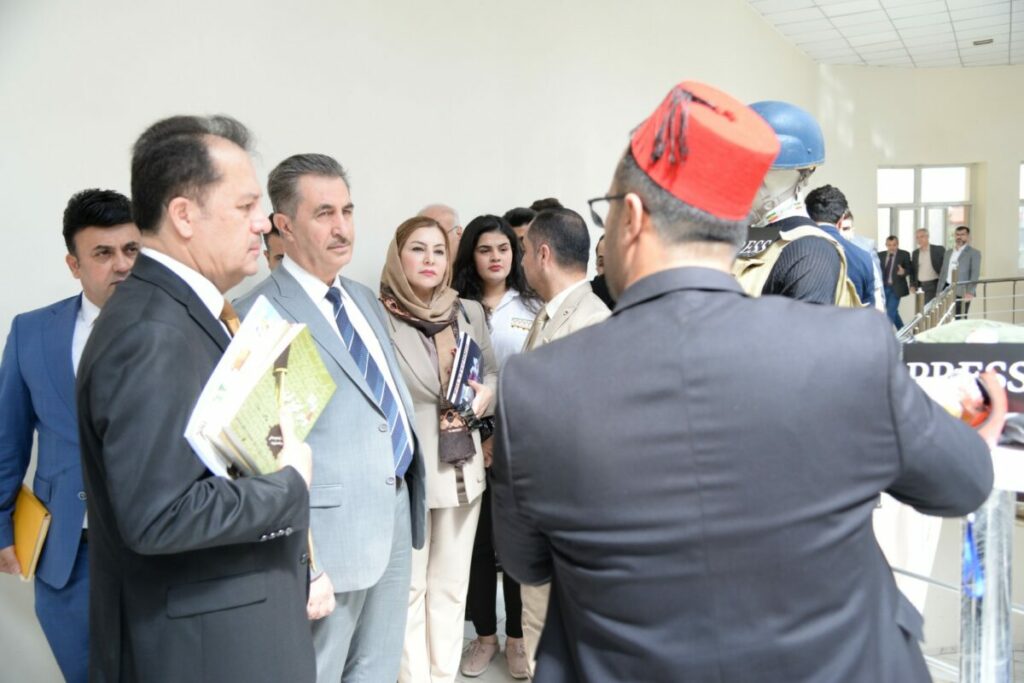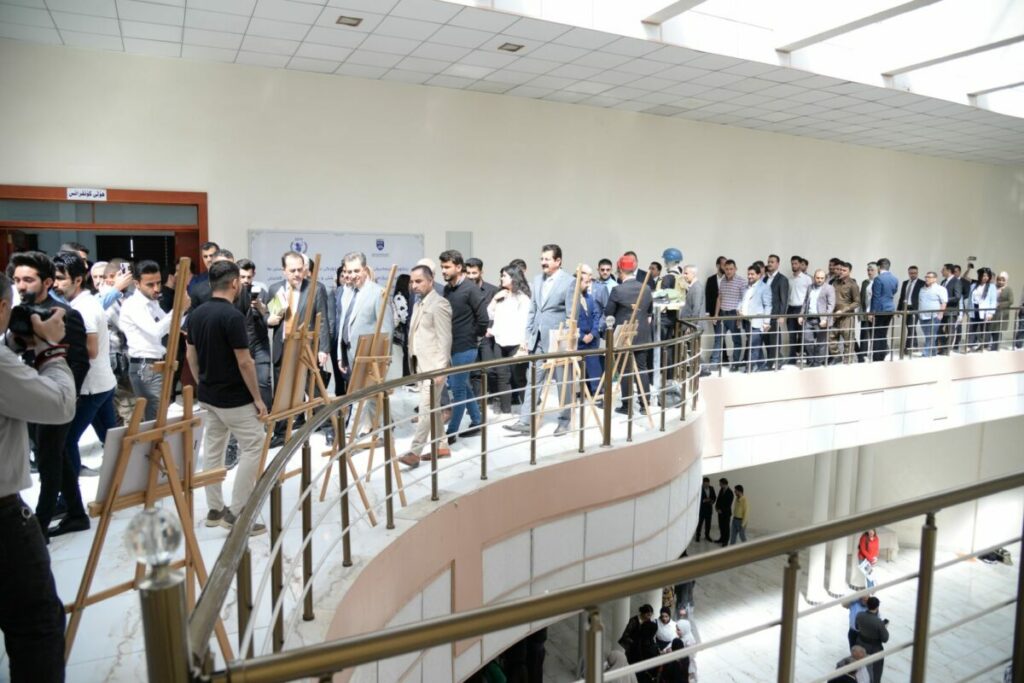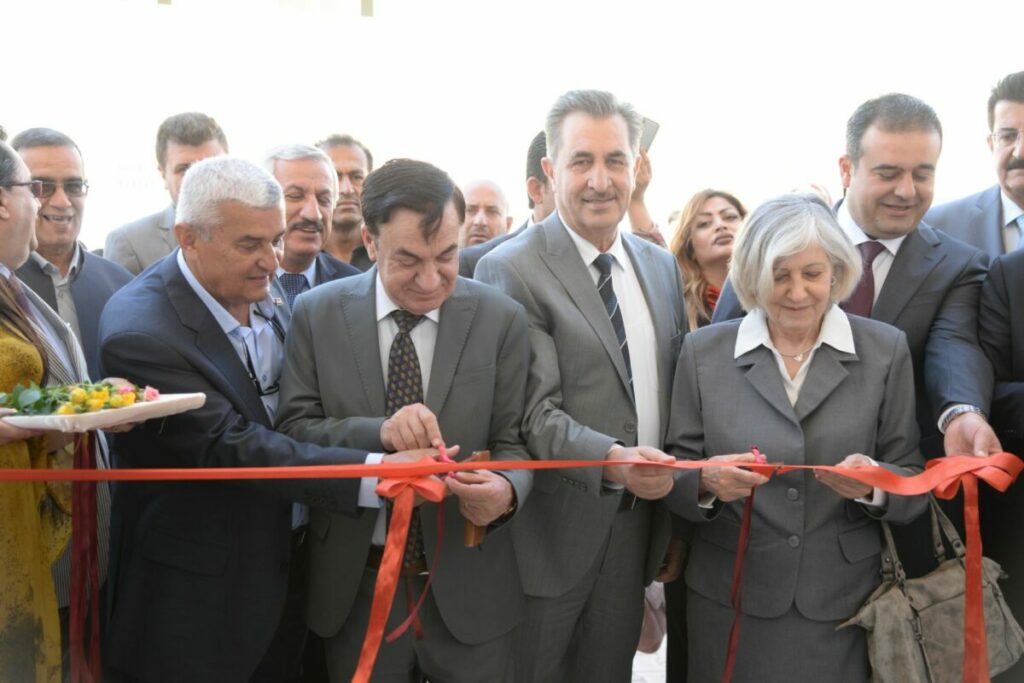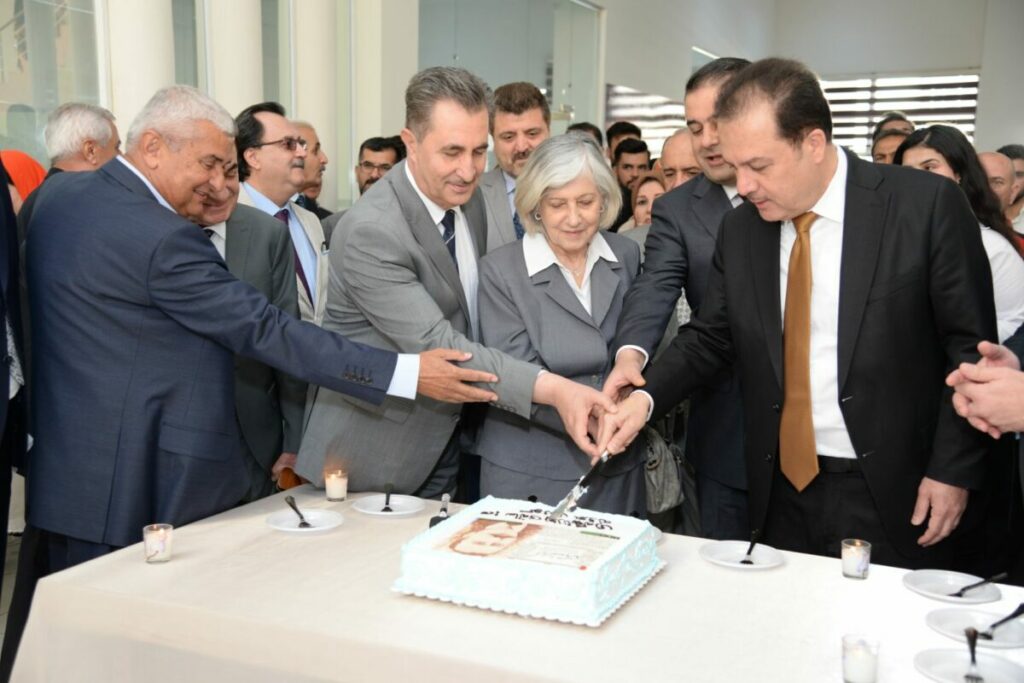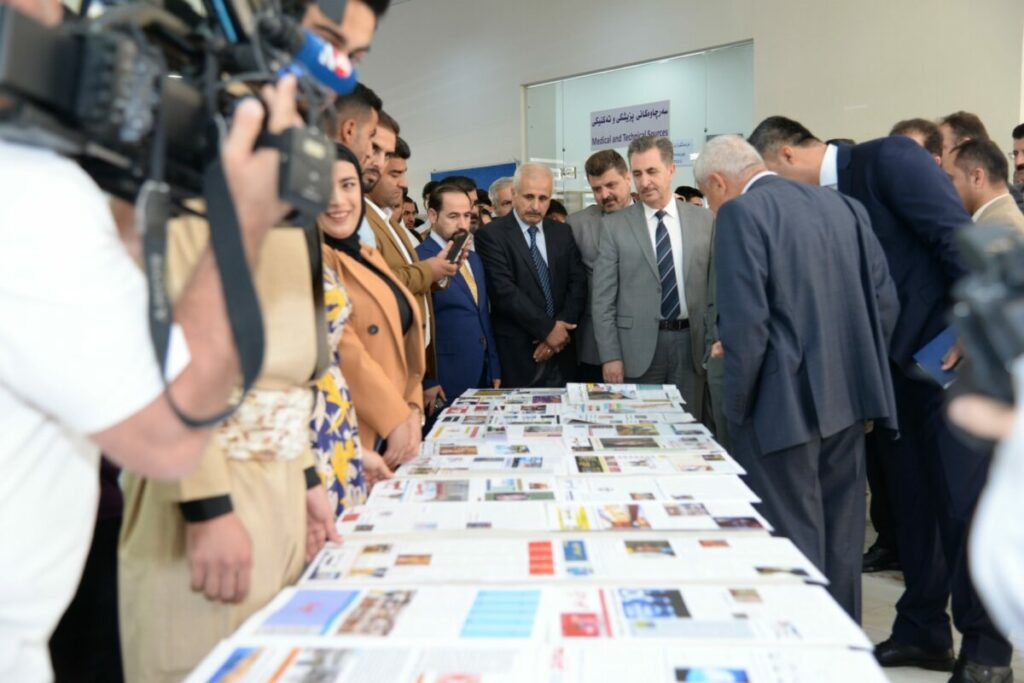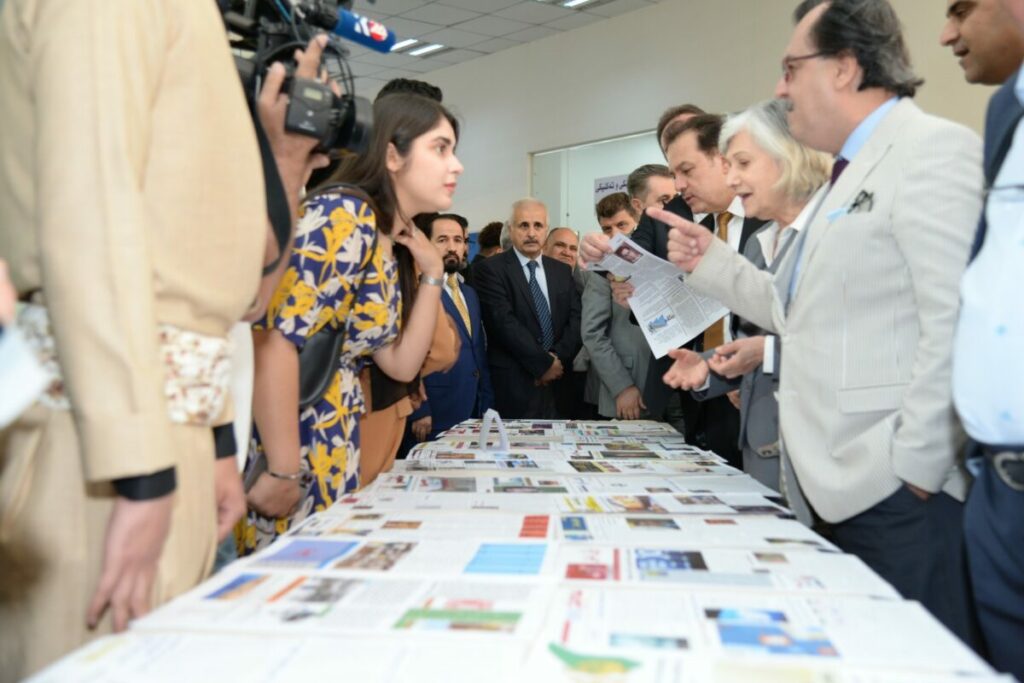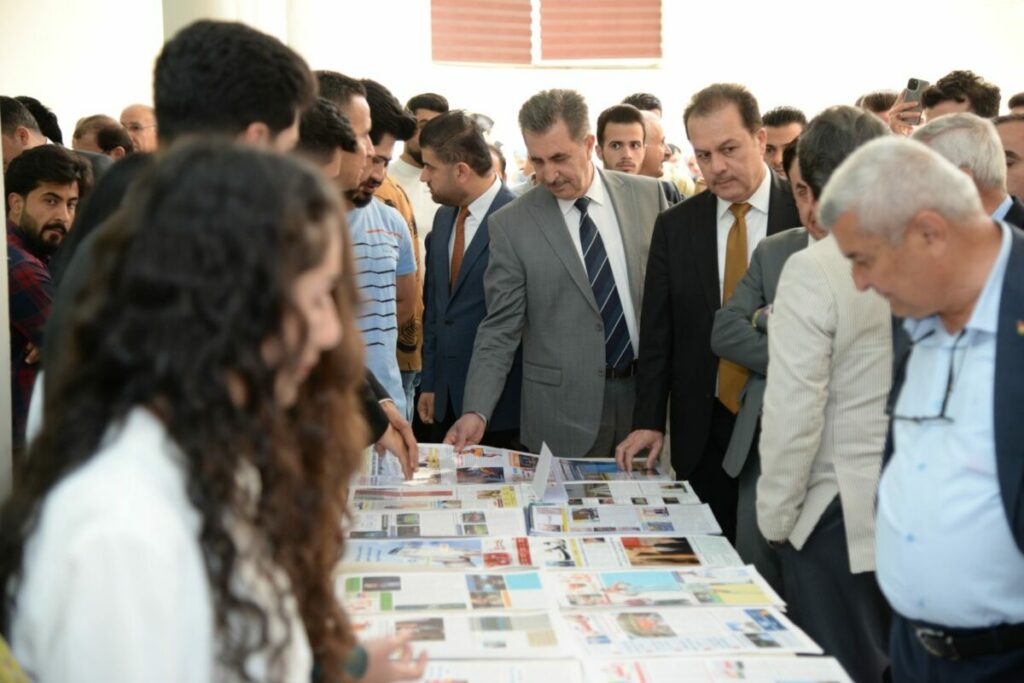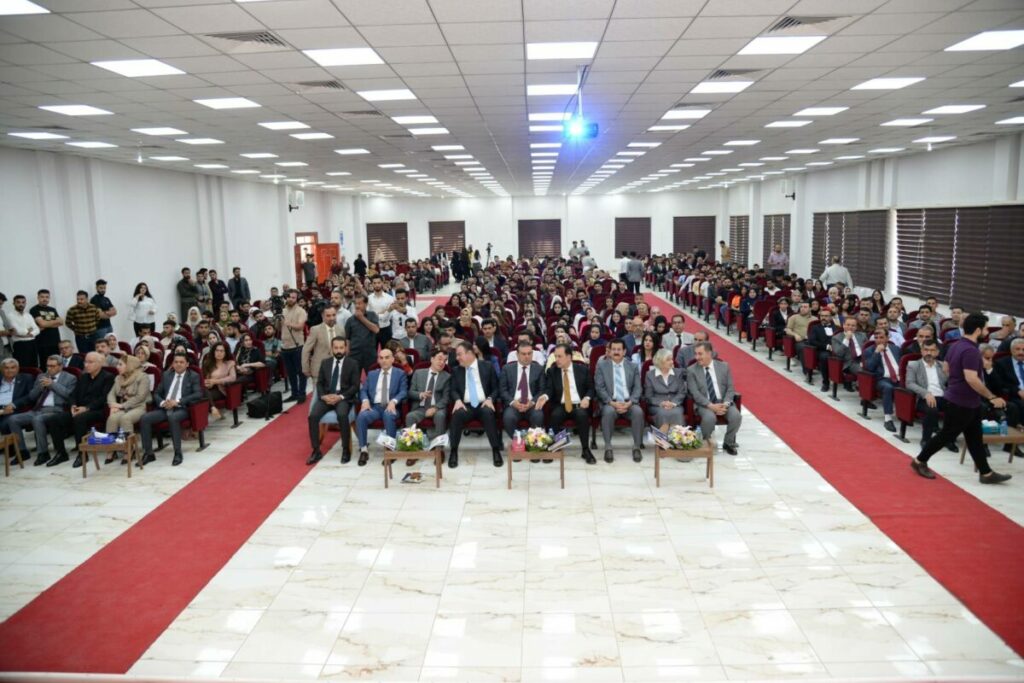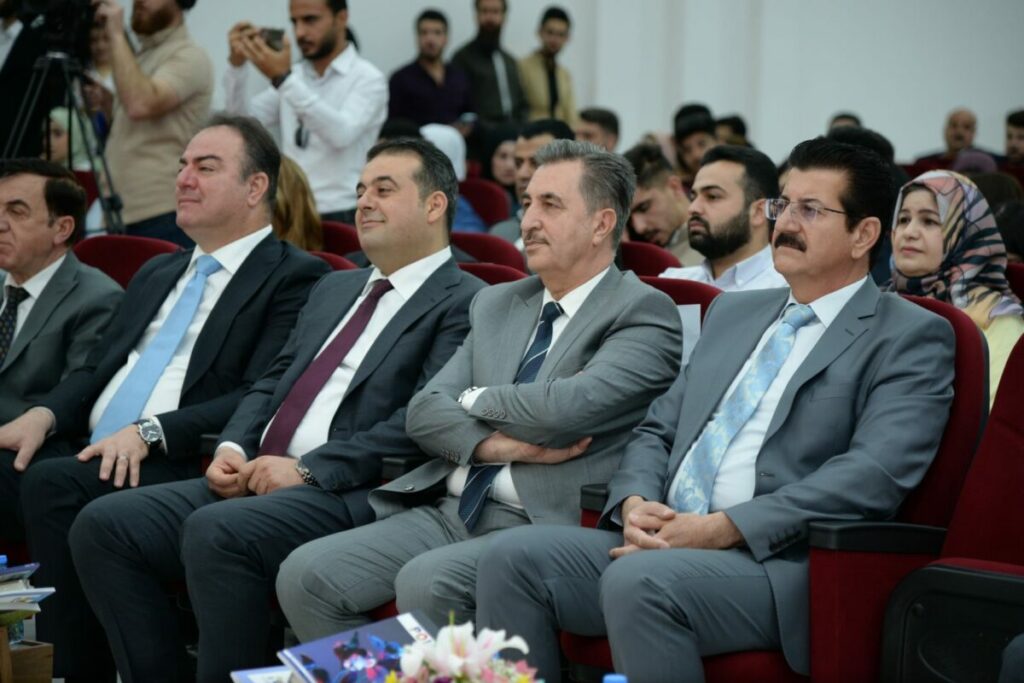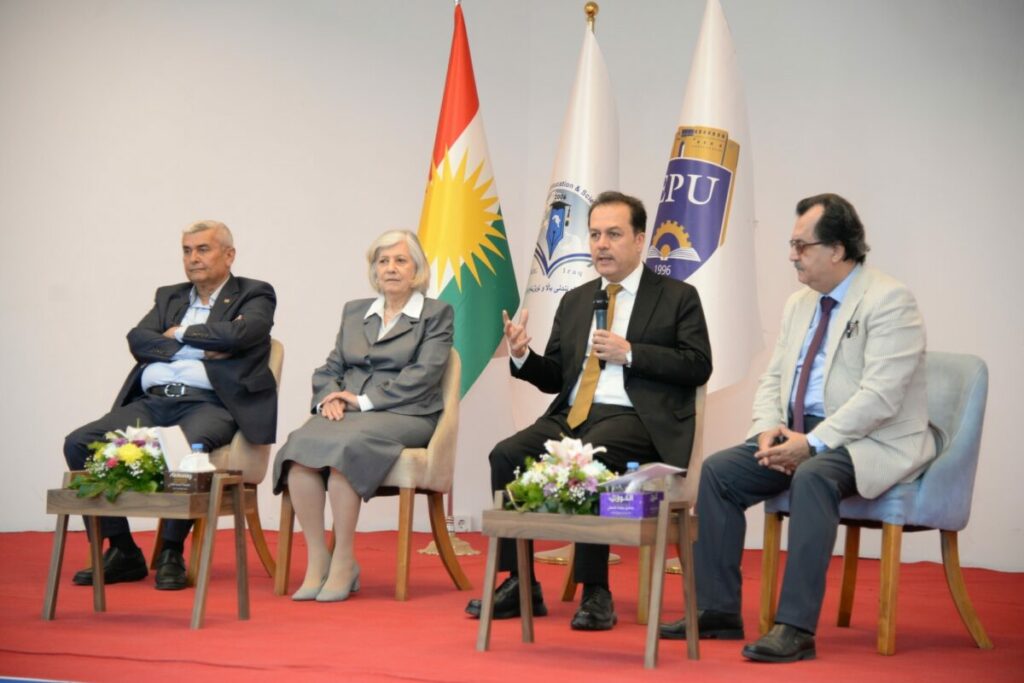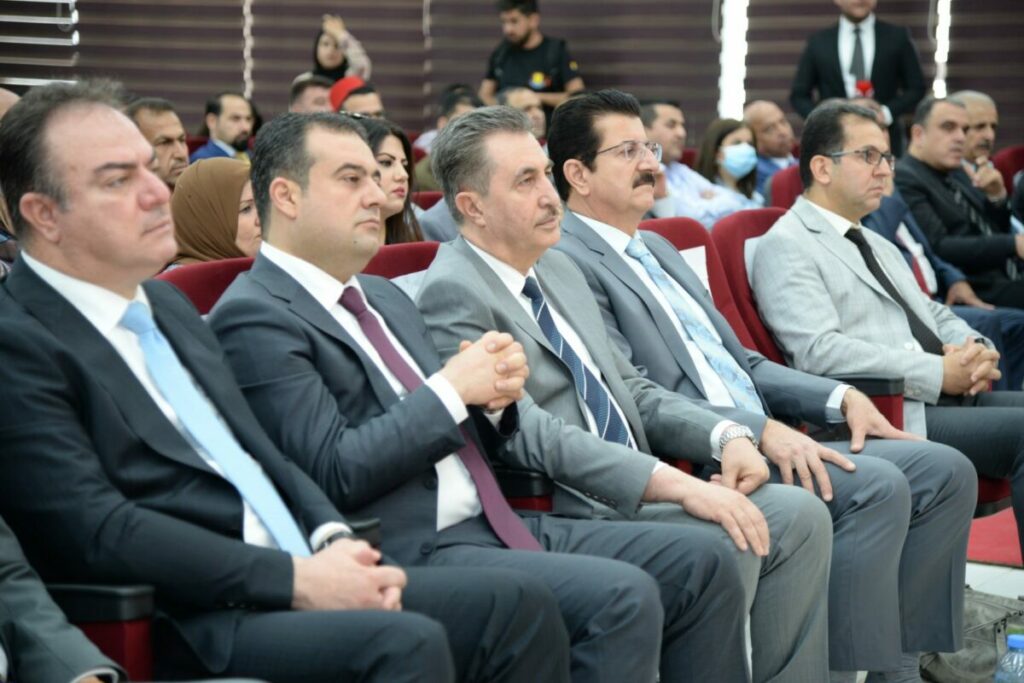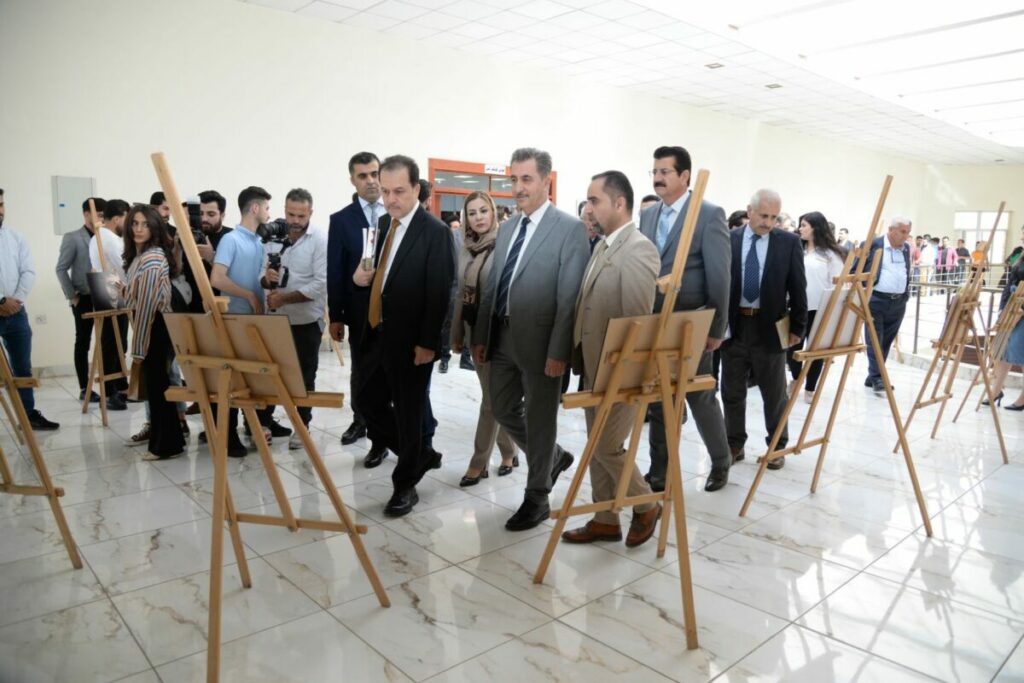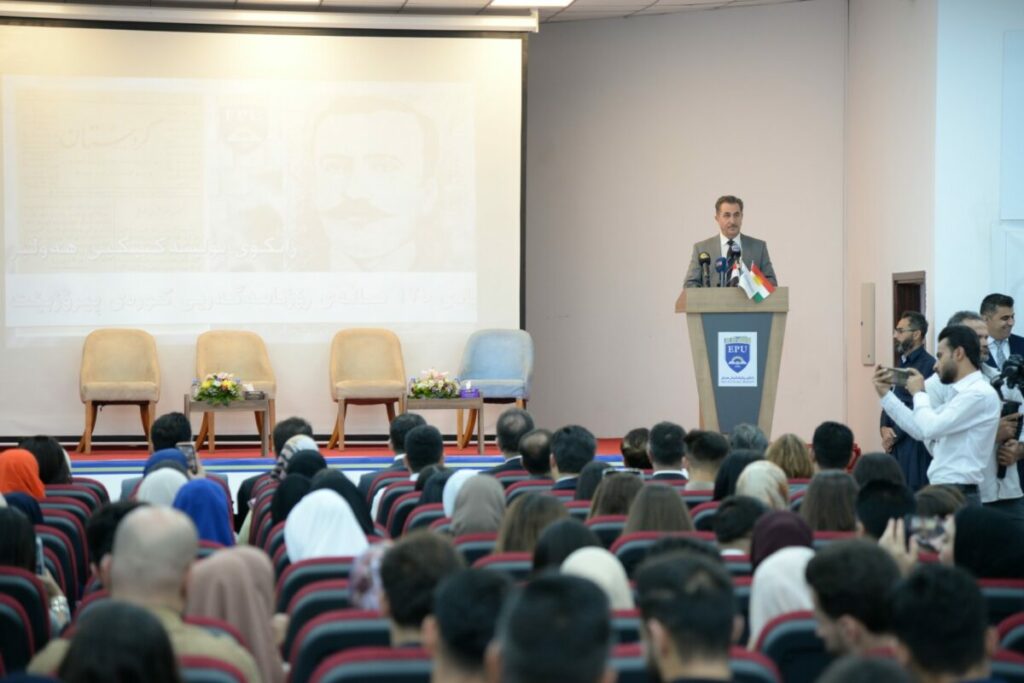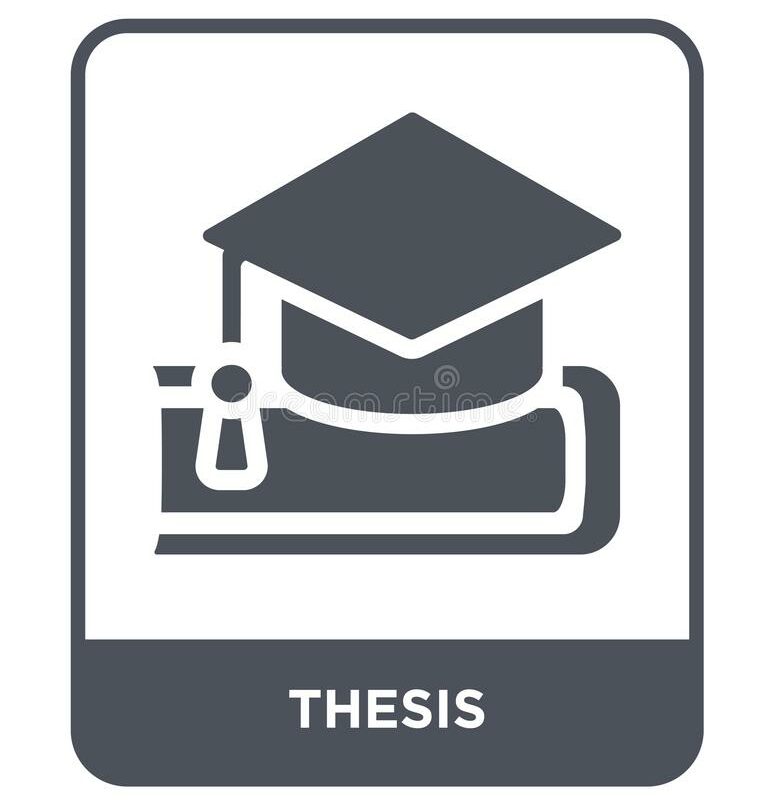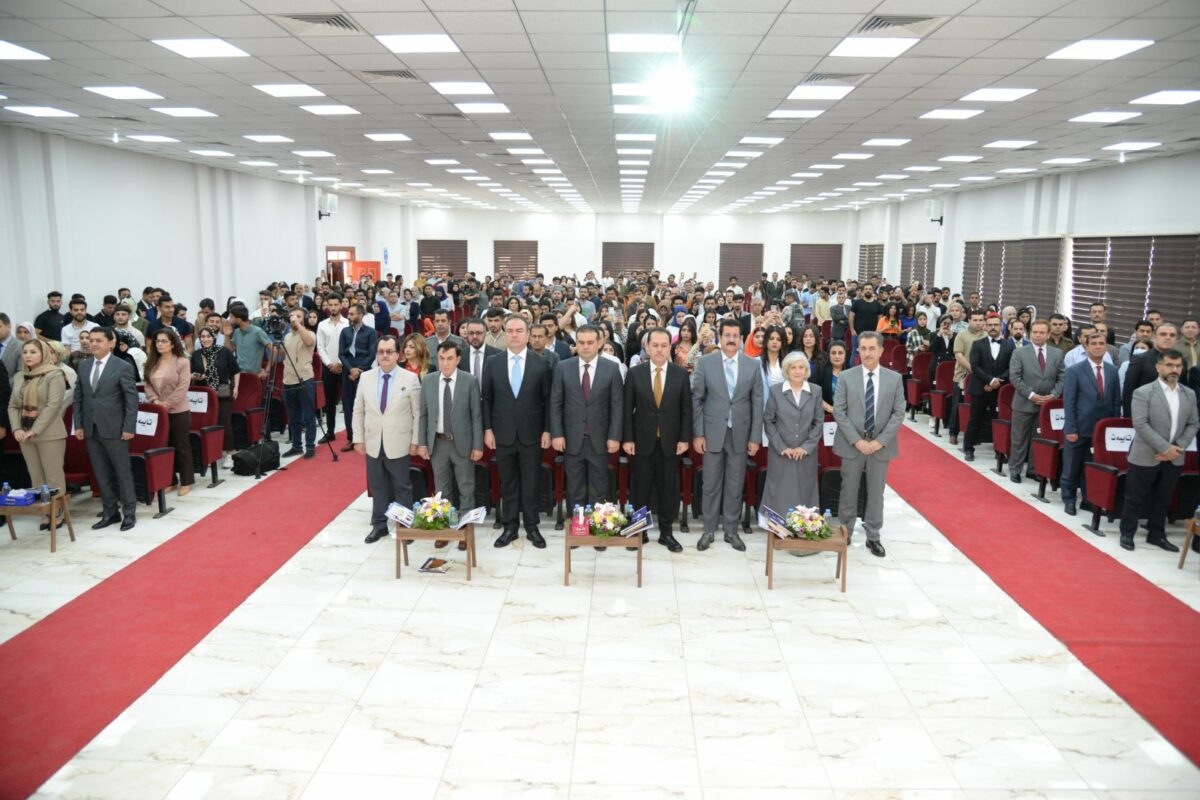- Halmat Brhan Najm
- [email protected]
- 0750 710 6464
- pdf zanko
-
Abstract
High-strength concrete is used to reduce the size of the beams in addition to enhancing the strength,
this leads to overestimated cost in comparison with normal-strength concrete while using normal-strength concrete leads to the overestimated amount of concrete (layer size) of the beam section. For
balancing the condition between the cost and size of beams, the benefit of both materials is used, by
using beams in two layers, high-strength concrete in the compression zone (top layer), which is more
beneficial for beam strength, and normal strength concrete in tension zone (bottom layer), which is no
need using high strength concrete the in-tension zone. This study investigates the flexural and shear
behavior of reinforced concrete beams consisting of two layers with different concrete strengths
(grades), for beams with and without shear reinforcement (stirrups), considering the effect of shear-span ratio, layer thickness, layer compressive strength, and the overlap time casting of the two layers.
The experimental program consists of a total of nineteen reinforced concrete beams of dimension (125
mm x 250 mm) with a total length of 1200 mm, the beams are reinforced with longitudinal
reinforcement (4Ø12mm) and using (Ø8mm) bar as transverse reinforcement (stirrups). The
experimental results show that the crack pattern of the two-layer reinforced concrete is closer to the
crack of the control beam with one layer. Increasing the compressive strength of the concrete of the
top layer, the ultimate failure load increased by (8.35%, 15.6%, and 18.85%), with respect to the
(control beam) with the full depth of normal concrete. By increasing the high-strength layer thickness,
the value of shear strength (Vc) and ultimate shear strength (Vu) increased linearly. The casting overlap
time of up to (60 min) can be used for casting two-layered reinforced concrete beams, which is
recommended, beyond this time the strength of the shear strength (Vc) and, ultimate shear strength
(Vu) decreases. With increasing the shear span ratio (a/d) from (1 to 1.5 and 2) the ultimate load
failure decreased by (33% and 50%). The shear strength capacity decreases with increasing stirrup
spacing.
Key Words: Two-layer RC beams, HSC beams, NSC beams, Shear strength, Ultimate shear
strength. - Erbil Technical Engineering College
- Civil Engineering
- structure
- Mohammed Rashad Ibrahim
- [email protected]
- 0750 430 9726
-
ABSTRACT
The reason for using composite materials across a variety of sectors is their light
density and consequently, this study's goal is to enhance the mechanical and
physical properties of polymer composite materials. To do this, two types of
polymer epoxy resin used as a matrix and reinforced with various fibers, including
mica and pinecone fiber as natural and glass fiber as synthetic fibers. Each fiber
added to the strength of epoxy resin by 15%, and creating hybrid composite by
combing mica and glass fibers; also glass and pinecone fibers at different wt%
(10:5, 7.5:7.5, and 5:10). Mica and pinecone fiber were also combined at wt%
(7.5:7.5). Due to mica fiber being used here to reinforce polymer composites for the
first time so three different forms (long fiber, powder and particle form) are used
and compared the results. Pinecone fiber used previously but no one mixed it with
glass fiber and these types of epoxy. Each sample was created using the hand lay-up
approach. The bulk density has been measured as a physical property, and
mechanical properties (tensile strength, flexural strength, and impact energy) have
all been carried out in accordance with ASTM standards.
Composite materials reinforced by glass and mica fiber in long fiber unidirectional
form were utilized. Noticing that mica fiber had a role in lowering bulk density to
2.76% for sikadur epoxy and 1.93% for master brace epoxy. Nevertheless, glass
fiber increased bulk density. Both fibers enhanced mechanical properties; however,
glass fiber has a bigger influence rather than mica fiber, even though mica fiber
may also provide improvements from 26% to 67% to each of them.
Also composite materials reinforced by unidirectional glass fiber and pinecone
fibers as reinforcement uses while using powdered pinecone. Pinecones
significantly impact reducing bulk density; for example, both epoxy had decreases
of 6.947% and 4.3%, respectively. In terms of mechanical properties pinecone fiber
had a decline effect, it saw a 5-26% decrease in the tensile and flexural strengths, 39-51% for impact energy, and however, when coupled with glass fiber, it had
positive results.
Using mica as (long fiber, particle, and powder), all enhanced bulk density by 2-
4%, but the effect was greatest when pinecone was added. In terms of tensile and
flexural strength, all of them improved by 10–60%, but the long fiber show greater
effect. However, impact energy increased by 26–50%, the powder form achieved
more value, but when mixed with pinecone, the impact energy decreased roughly 25
to 30 % comparing with the neat epoxy
- Erbil Technical Engineering College
- Mechanical and energy department
- Material sciences
- Siver Ibrahim Ismael
- [email protected]
- 0750 757 6365
- my thesis - FINAL
-
Ultra-High Performance Concrete (UHPC) has appeared in the past two decades. It is a relatively new type of concrete that exhibits mechanical properties that are far superior to conventional concrete. All around the world, many bridges have been built but are structurally deficient before reaching their design services. Because bridges are subject to high live loads due to traffic volume, they are usually overlaid with materials like NSC, bituminous, etc., which cause damage due to their weak resistance to tension force and permeability. Generally, deterioration starts with cracking on the top surface of bridge decks; over time, this damage goes through the substructures, and those structurally deficient bridges require a very high budget to replace. Applying a thin layer of UHPC on top of normal concrete bridge decks has been proposed as a potential treatment in a prior study. Because UHPC has a high compressive and tensile strengths, which mainly result from the addition of steel fibers that enhance durability and long-term stability properties.
In this study seventeen simply supported reinforced concrete flat plate
slabs 1500x500x140 mm were casted and tested, loaded through two-line loads along the short span direction, to investigate the strength and behavior of reinforced concrete bridge deck slabs overlaid with UHPC.
The main variables studied in this investigation were:
• Overlay thickness 20-50 mm.
• Reinforced UHPC overlay with reinforcement ratio 0-1.31 %.
• Interface patterns rough, horizontal groove, vertical groove, cross-hatch groove, and diagonal groove.
• Substrate material compressive strength 20-40 MPa.
• Three types of material evaluated for overlay application NSC, HPC,
and UHPC.
• The addition of a mechanical connector with a rough surface pattern
evaluated zero until three rows of an anchor.
Results indicated that using UHPC overlay can double the ultimate
strength carried by the composite slab compared with the HPC overlay. The thin layer of UHPC as the wearing surface increases the life of the existing structure and reduces the maintenance cost twice compared with HPC. Also, the addition of embedded rebar at the UHPC layer tends to conclude shear stress at the interface and normal stress at the UHPC overlay by about 30 %. Moreover, ultimate strength increases with an increase in the degree of interface roughness between two layers of concrete, and an adequate bond can be attained with all interface patterns. The ultimate strength increases with an increase in substrate material compressive strength due to adhesion and cohesion properties at the interface. For bridge deck slabs overlaid with UHPC the mode of failure is governed through the substrate while the adequate bond strength is provided by good surface preparation, otherwise, top concrete crush and splitting of the composite structure take place with HPC and NSC. Test results also indicated that the addition of a mechanical connectors with rough surface preparation leads to an increase strength by 50 %. With the use UHPC overlay, the characteristics of the slab were entirely enhanced. The central deflection increased by about 50% compared with HPC. Overlay failure never happened with UHPC overlay. The concrete compressive and tensile strains are increased by a considerable amount (for the same load level). UHPC overlay with proper surface preparation leads to composite structure behaving monolithically and failure load goes through the substrate. - Erbil Technical Engineering College
- Civil Engineer
- Structural Engineering
On Sunday, April 30, 2023, in the hall of the Cultural Center of Erbil Polytechnic University in the presence of the Rector of the University, Prof. Idris Mohammed Tahir Harki and a number of party and government officials, personalities and experienced journalists were held to commemorate the 125th anniversary of Kurdish journalism, which was organized by both media departments of Erbil Technical College and Institute.
The ceremony began with listening to the national anthem Ay Raqib. Idris delivered a speech as follows:
“In the name of Allah, the Most Merciful
On behalf of the Presidency of Erbil Polytechnic University and the Dean of the Technical College of Administration and Deanship of Erbil Technical Institute, both departments of media and media, we welcome the guests and thank you for your presence.
On the 125th anniversary of Kurdish journalism, which was published on April 22, 1898 for the first time in Kurdish, we extend our most beautiful and beautiful congratulations to Kurdistan journalists.
Ladies and Gentlemen, the Department of Media Technique in Erbil Technical College of Administration and Department of Media in Erbil Technical Institute of Administration offer several professional cadres in the field of media.
Ladies and gentlemen, commemorating any memories, whether pleasant or bad memories, especially national memories, play a great role in raising awareness among young people and encourages them to be proud of their nation and inspiration for work, innovation and sacrifice. do it.
Ladies and gentlemen, what is important to point out the media issue in society, if we look at the definition of media, are consistent with the functions of language in society. Therefore, our students and youth should love the Kurdish language, because love of language means love of the land and the country, and our duty is our teachers to educate their students on the love of the Kurdish language.
Finally, I remember the words and lines of the poem and the Yazidi writer and writer in Armenia.
ب خەمل و رەوشە شیرین و خوەشە
شيرين و خوەشە زمانی کوردی
ب خوەش ئاوازە لەتیف و نازە
لەتيف و نازە زمانی کوردی
We hope that we can convey a new lesson in love of language to the students in these celebrations. We also congratulate all Kurdistan journalists and congratulate the students of both departments of media in Erbil Technical Administrative College and Institute who are the future of the media of this country. At the end, I would like to thank the organizing higher committee of this ceremony. I wish you joy and success.”
Then a panel by Dr. Bahat Hasib Karadaghi was held on the situation of the media and journalists in Kurdistan. Salar Osman, Head of the Culture and Media Department of the Kurdistan Democratic Party, Mr. Azad Jundiani, a political figure, Mr. Kurdistan Mukriani, writer, academic, linguist and former president of the Kurdish Academy.
The participants explained the situation of the media and the problems in front of the participants.
During the commemoration, several students’ activities and the book exhibition of the works of our university teachers were shown.
